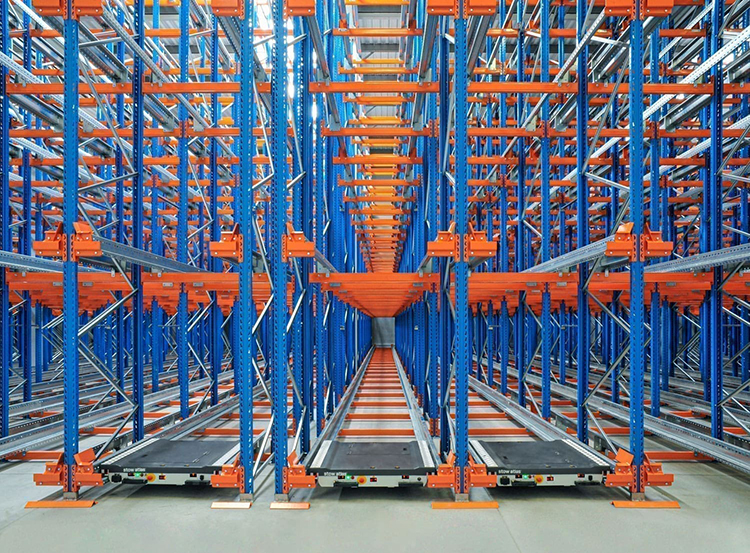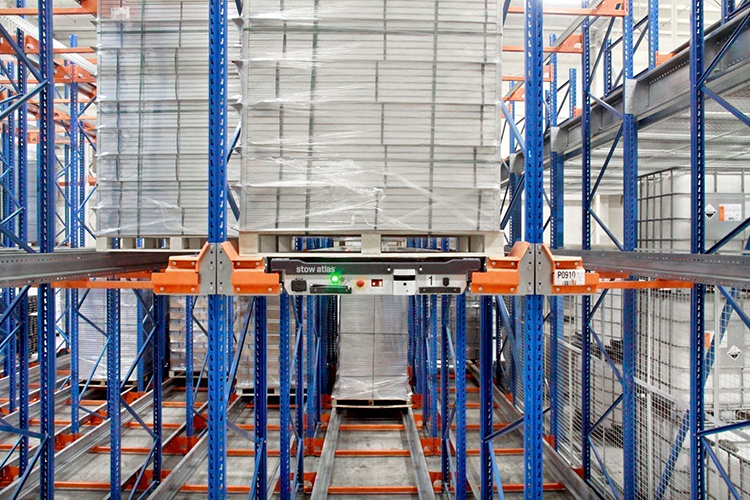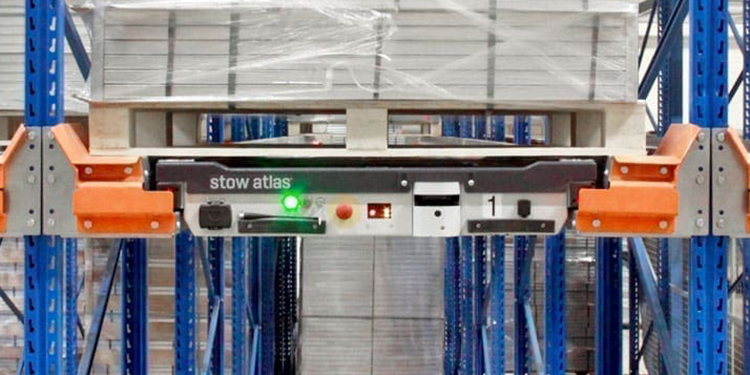As warehouse demands grow increasingly complex and labor availability shrinks, flexible storage solutions are becoming essential. Semi-automated shuttle systems—often called pallet shuttles—offer a hybrid solution. These systems bridge the gap between drive-in racking and automated storage and retrieval systems (AS/RS) . They also support both first-in/last-out (FIFO) and last-in/first-out (LIFO) inventory management strategies.
Unlike traditional systems where forklifts drive into the racking, a semi-automated pallet shuttle system allows a robotic cart—or shuttle—to move pallets through deep lanes of storage rack. This significantly reduces both labor time and potential for rack damage, explained Terry Caston, Senior Director of Operations at Twinlode, a division of KPI Solutions. The company is a member of the Rack Manufacturers Institute (RMI).
Understanding Semi-Automated Shuttle Systems
At the core of these systems are motorized shuttles that navigate rails within deep-lane racking structures. Unlike drive-in racks, where forklifts enter the storage lanes, semi-automated systems keep forklifts in the aisle.
“These systems consist of deep-lane racking—much like a drive-in configuration—combined with autonomous shuttles that travel across rails along each level,” he said. “A forklift simply positions the shuttle in a lane, then loads a pallet onto the rails above it. The shuttle’s integrated lift extends up to raise the pallet off the rails and carries it to the correct position in the lane.”
This design not only minimizes forklift travel time but also allows for greater storage depth—up to 50 pallets deep—without compromising accessibility. Further, because the forklift never enters the rack, semi-automated shuttle systems improve safety and reduce potential rack damage.
“The operator drops the pallet off in the lane, then goes to get the next one. By the time the forklift returns with the next load, the bot is back at the front and waiting for the next load,” said Caston. “That eliminates the minutes spent driving into and backing out of the racking to place loads manually.”

Designed for Flexibility and Growth
Their inherent adaptability makes semi-automated shuttle solutions both versatile and cost-effective, Caston continued.
“Each level within the racking can store different stock keeping units (SKUs). That allows an operation to store a mix of products in the same system or even the same lane,” he said. “This contrasts with traditional drive-in racks, which typically store a single SKU per bay.”
Additionally, because the system enables both FIFO and LIFO operations, it provides versatility for different warehouse workflows.
“An operation could create a 10-deep lane as 5 plus 5, or 7 plus 3,” explained Caston. “The bots know the location of each pallet. If the SKU mix changes over time, the facility can reconfigure how it’s using the system. It’s dynamic.”
This scalability makes semi-automated pallet shuttles a good fit for facilities needing to adjust product mix frequently. While users can technically assign a shuttle to every lane, Caston noted that it’s more cost-effective to use fewer bots across multiple lanes. System manufacturers offer modeling tools to help determine the optimal number of bots based on throughput.

Operational Efficiency Without the Price Tag of AS/RS
Compared to AS/RS, semi-automated shuttle systems offer a budget-friendly alternative. “It’s essentially a poor man’s AS/RS,” Caston said. “It’s not fully automated—you don’t have cranes and lifts—but you’re getting a lot of that functionality.”
Further, because forklifts do not enter the system the rack can incorporate roll-formed steel instead of structural steel. Adding guarding or structural steel at access points where damage risk is higher is also an option.
Learn More About Semi-Automated Shuttle Systems
Several RMI members engineer, manufacture, and supply semi-automated pallet shuttle systems. Connect with them and access a variety of design and safety resources via mhi.org/rmi.




